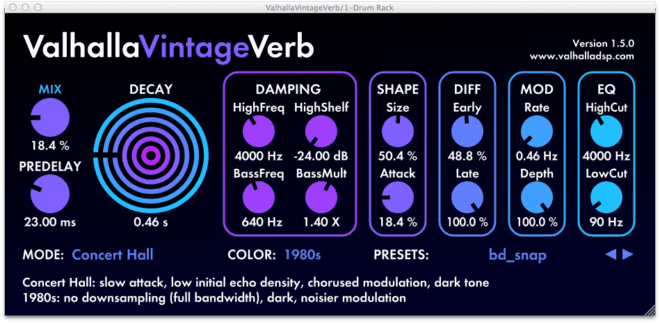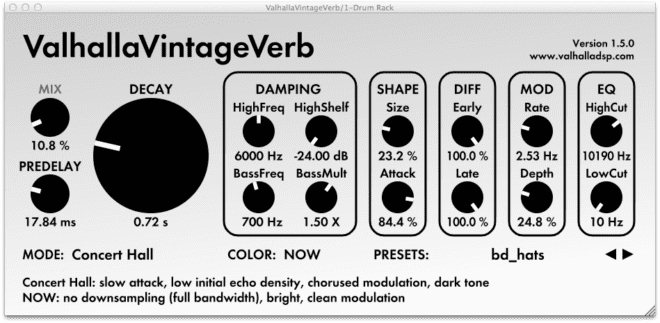We get experimental in the latest Beat Dissected, twisting a few house conventions using live drums and broken beats to create a loping, organic groove.
Beat Dissected is a regular series in which we deconstruct drum patterns, showing you how to program them in any DAW. Just copy our grid in your own software to recreate the loop.
Here’s the beat we’re building today:
Spec
Tempo
115-120 bpmSwing
50% (none)Sounds
mostly live drum samplesStep 1
As always, we’ll start with the kick drum, which plays a major role in defining the character of this beat. Most of the sounds we’re going to use here are live hits. For the kick, we’ve gone through a drum session and selected an individual hit with a lot of room ambience. We’ve layered this with an analogue drum machine kick to boost the low end. The low end from the drum machine kick helps to fill in the sub-bass frequencies that are usually missing from organic kick samples. A sample of something like a Roland CR-78 or 808 works perfectly for this kind of task.
Throughout this beat, we’ll be taking the conventions of house beats and turning them on their head, creating something altogether different that still works in a similar context. The kick pattern is the first step of this process. Instead of a four-to-the-floor pattern, we’ve broken things up. The only downbeats played by the kick come at the start of each bar. There are some very minor velocity variations, but the disjointed groove comes mainly from the kick placement itself.
Processing on the kick is minimal, with just an 1176 compressor plugin set to around 3 dB of gain reduction and a fast release to tighten things up.
Step 2
Where you’d normally find a clap or snare in a typical house beat, we’ve used a finger snap. This plays on the 2 and 4 of each bar. Again, this is a little twist on a very simple convention used so often in house beats, but in this case we’re changing the sound rather than the pattern. We’ve chosen a simple snap sample from the Boss DR-202, but you could always layer snap samples with percussive sounds, snares or claps for added character.
We’ve added the Valhalla VintageVerb plugin to the snap in order to give it some ambience and help bring a sense of depth and space to the mix. We’ve chosen a hall-style setting with a decay time of 0.46 seconds. The wet/dry mix is set to around 18% for a fairly prominent effect.
Step 3
For the hats we’ve also gone into an old drum session and chopped out some live samples: closed, mid and open hat sounds are used in this case. The pattern seems quite haphazard but there’s a logic to it: the mid hats are the main sounds driving the rhythm, with the lower velocity closed hats filling in some of the gaps and the open hats used sparingly.
For processing we’ve added the Valhalla VintageVerb plugin again. For the hats we’ve also used a concert hall setting to keep a similar feeling to the snap, but we’ve gone for a slightly cleaner setting with a longer decay, bringing the hats to the forefront of the mix. Note that the wet/dry mix is quite low here, set at just 10% in order to avoid clogging up the mix with overly dominant reverb tails.
Step 4
For the final step, we’ve chosen a woodblock – again a live sample taken from a previous drum session. We’ve kept it simple here with just a few hits mirroring some of the kick drums, but you can experiment with different percussive elements to add character and groove. Shakers or tambourines on the offbeat can be effective here.
By now the beat has a really distinctive character. It can also be interesting at this point to experiment with the kick placement and velocity in order to tweak the character of the beat. Even switching to a four-to-the-floor kick pattern is worth a try to hear how nicely the groove still works. It can be an interesting and effective arrangement technique to program contrasting kick patterns in different sections of a track in order to alter the dynamics and switch up the groove.
We’ve chosen not to apply any bus processing to the drum sub-mix in this case. The most important work is done by the sample selection – we’ve used very realistic, organic sounds, with just a bit of reverb to help add a bit of ambience.








08.31 AM
nice beat.
and nice use of the word loping.
double whammy!
09.04 AM
Sound like Theo Parrish – Footwork
01.40 PM
thank you, maybe you can do one about romanian minimal in the future…rhadoo/ raresh and these guys
06.26 PM
this beat sucks, any idiot could program it by trial and error. dissect a real broken beat song instead.
11.42 PM
No need to be a jerk Art.
09.34 AM
art vandelay sucks.
this beat is cool. here it is in a context
https://www.youtube.com/watch?v=70CeiEJi1OI
12.31 PM
Thank you for this fantastic in depth & free tutorial!
02.44 AM
Great stuff processing tips Attack Mag and thanks so much for your time! There are so many variables with the Broken beat/ Nu jazz groove from sitting down to the dancing. That why it`s so great.
Check out the master of the craft : Mark de Clive-Lowe (9 mins in)
https://www.youtube.com/watch?v=Sh0SEKWNHrI#t=664
07.50 PM
cannot download this project with blend;(
10.26 AM
Are there supposed to be samples to download to complete this project with?
09.40 AM
Hi John, the samples are available to download via Blend. Thank you.